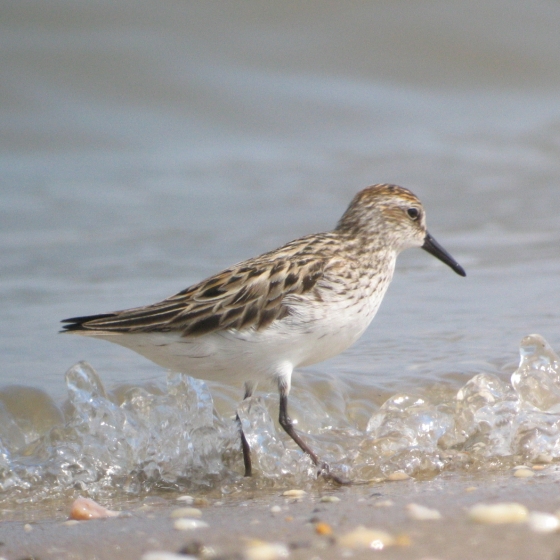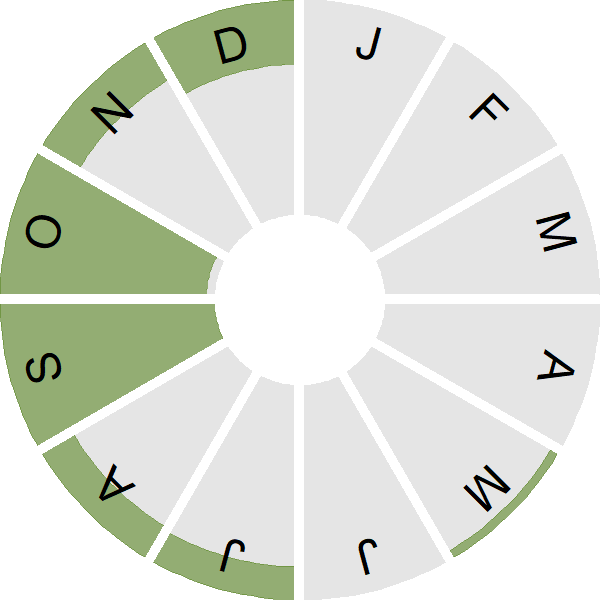Semipalmated Sandpiper

Introduction
This small sandpiper is a rare visitor to Britain & Ireland from North America, with most records coming from the autumn period.

Key Stats
Status and Trends
Conservation Status
Population Size
Population Change
Population trends of this scarce species are not routinely monitored.
Distribution
This species is a rare vagrant and was recorded during Bird Atlas 2007–11 as shown on the map.
or view it on Bird Atlas Mapstore.
or view it on Bird Atlas Mapstore.
Distribution Change
This vagrant is too rarely reported to map distribution change.
Seasonality
Semipalmated Sandpiper is a rare vagrant with most records in autumn and early winter.
Weekly pattern of occurrence
The graph shows when the species is present in the UK, with taller bars indicating a higher likelihood of encountering the species in appropriate regions and habitats.

Movement
Britain & Ireland movement
Biology
Survival and Longevity
Survival is shown as the proportion of birds surviving from one year to the next and is derived from bird ringing data. It can also be used to estimate how long birds typically live.
Classification, names and codes
Classification and Codes
- Order: Charadriiformes
- Family: Scolopacidae
- Scientific name: Calidris pusilla
- Authority: Linnaeus, 1766
- BTO 2-letter code: PZ
- BTO 5-letter code: SEMSA
- Euring code number: 4980
Alternate species names
- Catalan: territ semipalmat
- Czech: jespák srostloprstý
- Danish: Tyknæbbet Dværgryle
- Dutch: Grijze Strandloper
- Estonian: hallrisla e. hallrüdi
- Finnish: kanadansirri
- French: Bécasseau semipalmé
- German: Sandstrandläufer
- Hungarian: kis partfutó
- Icelandic: Fitjatíta
- Irish: Gobadáinín Mionbhosach
- Italian: Gambecchio semipalmato
- Latvian: smilšu šnibitis
- Lithuanian: tundrinis begikas
- Norwegian: Sandsnipe
- Polish: biegus tundrowy
- Portuguese: maçarico-rasteirinho / pilrito-rasteirinho
- Slovak: pobrežník piesocný
- Slovenian: krpljasti prodnik
- Spanish: Correlimos semipalmeado
- Swedish: sandsnäppa
- Welsh: Pibydd Llwyd

